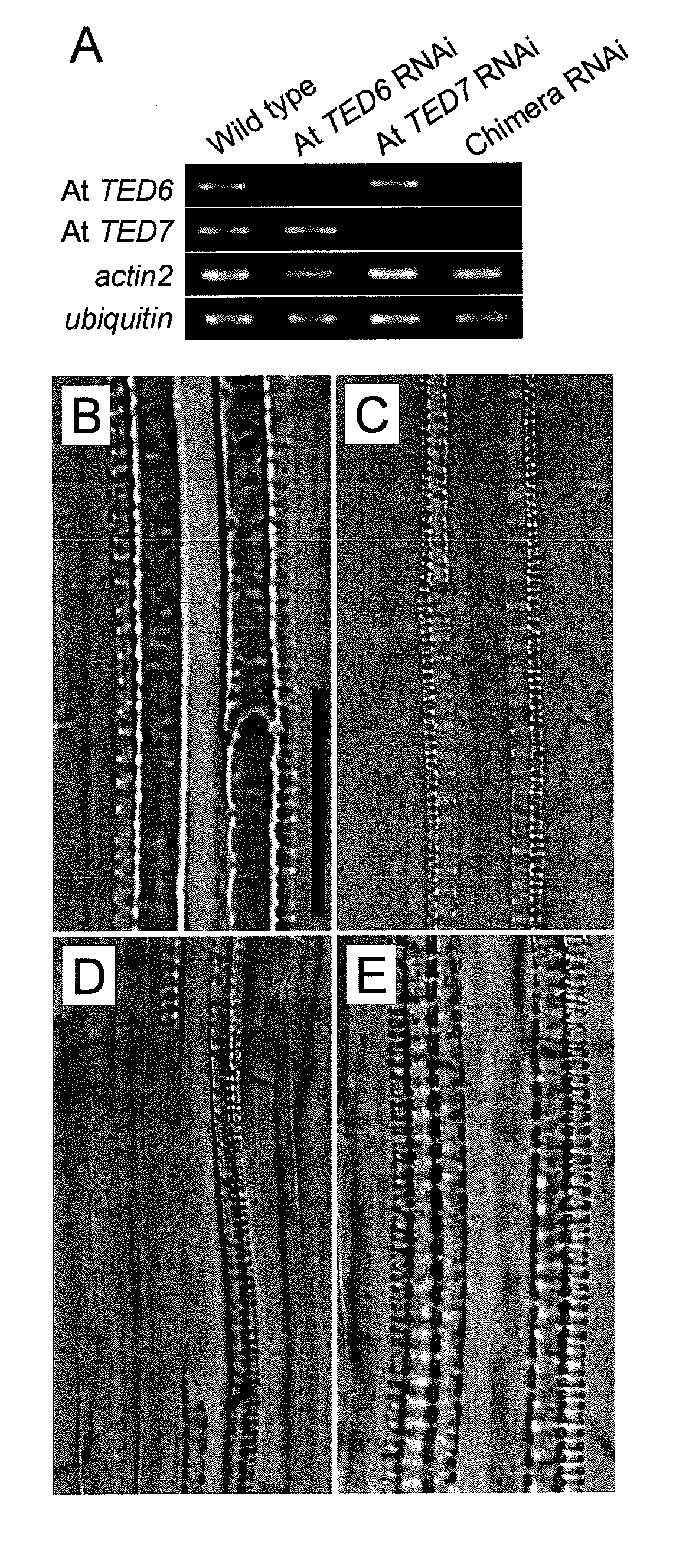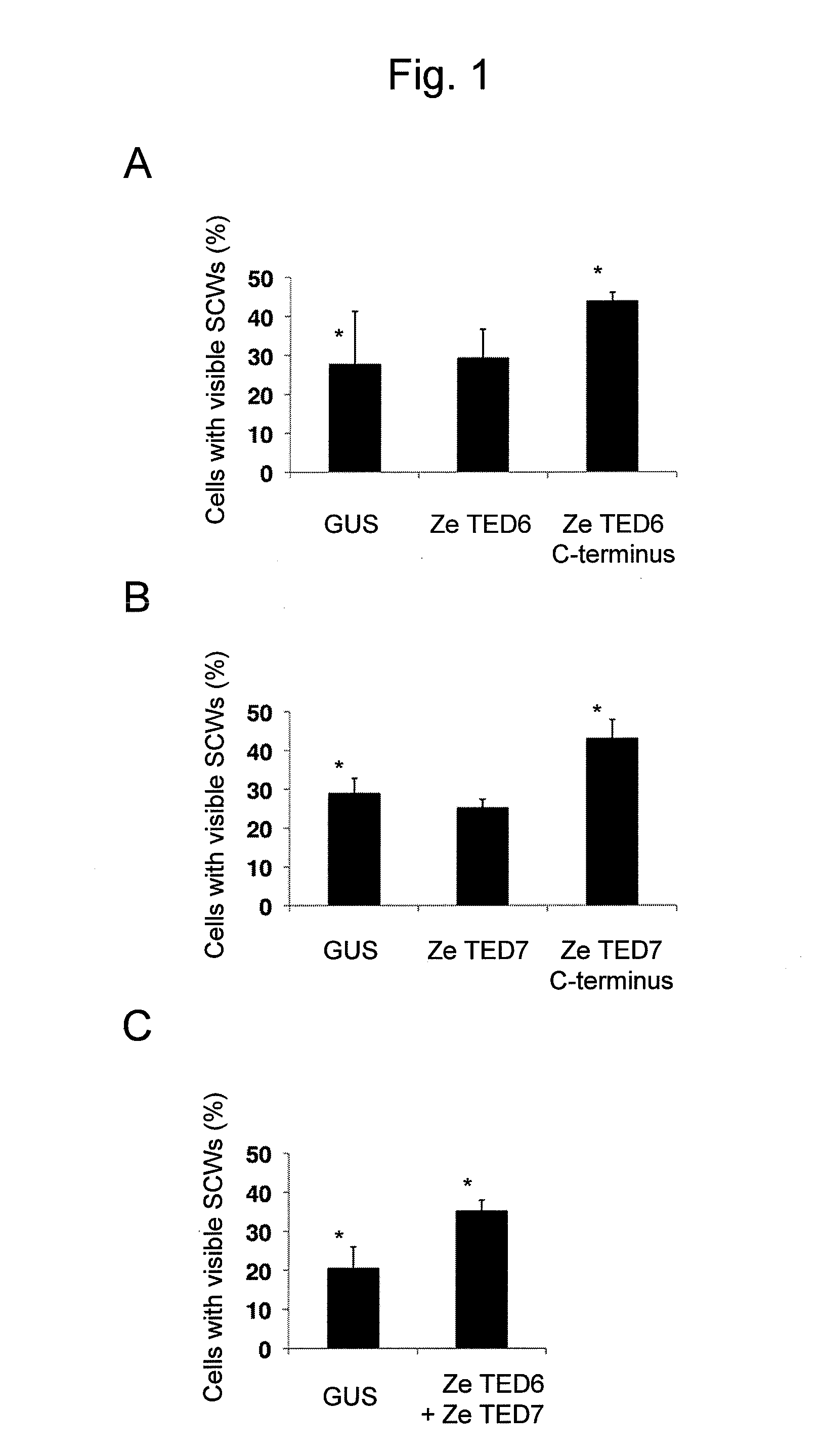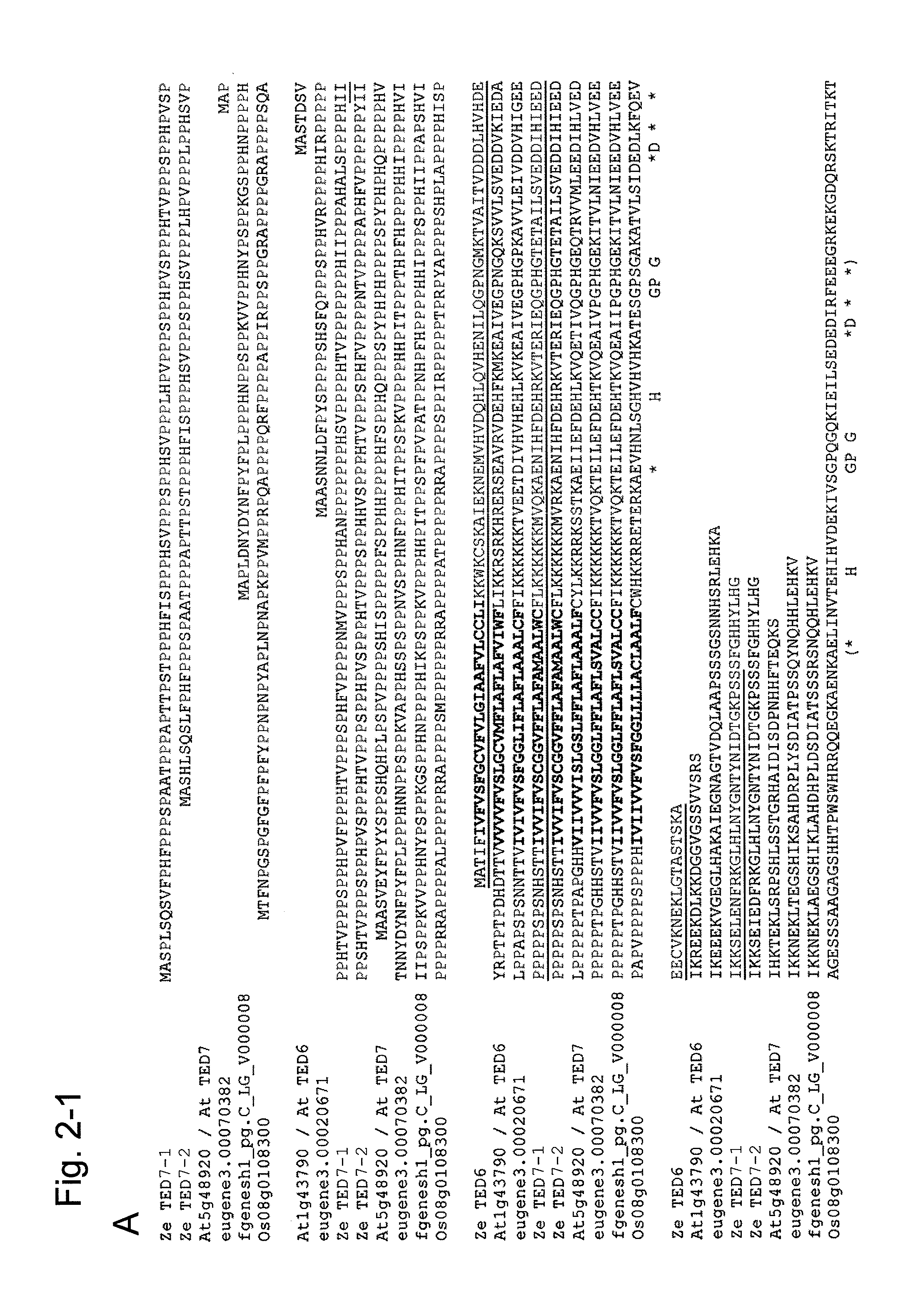Method for promoting the formation of secondary cell wall of plant
a secondary cell wall and plant technology, applied in the field of plant secondary cell wall promotion, can solve the problems of inability to be practicalized, low amount of cells and secondary cell walls resulting from promotion, and inability to be practically used, so as to promote the formation increase the thickness of secondary cell walls, and increase the amount of biomass
- Summary
- Abstract
- Description
- Claims
- Application Information
AI Technical Summary
Benefits of technology
Problems solved by technology
Method used
Image
Examples
example 1
Functional Analysis of Ze TED6 and Ze TED7 Genes in Tracheary Elements of Plants of the Genus Zinnia elegans (Zinnia)
[0068]Based on bioinformatics analysis (including SOSUI, TMHMM, and SignalP) of Ze TED6 and Ze TED7 proteins, both of these proteins were predicted to be “type I membrane proteins” (single transmembrane protein having an extracellular or lumenal N-terminus and a cytoplasmic C-terminus). The above proteins contain general single transmembrane domain-like hydrophobic regions (representing 23 out of 95 amino acids and 23 amino acids out of 300 amino acids of the Ze TED6 protein and the Ze TED7 protein, respectively). It was predicted that the C-termini thereof would be located on the cytoplasmic side. However, regarding the potential activity of these proteins, no functional domain has been predicted by ProDom, PROSITE, or Pfam. Only a Pro-rich region has been identified in the N-terminal region of the Ze TED7 protein. It is well known that, among extracellular plant pro...
example 2
Functional Analysis of at TED6 and at TED7 in Plants Belonging to the Family Brassicaceae (Arabidopsis)
[0071]The homologs of Ze TED6 and Ze TED7 genes in Arabidopsis were found to be At1g43790 (At TED6) and At5g48920 (At TED7), respectively. The promoter activity of At TED6 and At TED7 were examined using 1 kb- and 0.5 kb-upstream sequences of At TED6 and At TED7. GUS reporter genes were ligated to these upstream sequences. Expression of the reporter transgene in adventitious shoots was limited to vessel elements undergoing differentiation for both genes, confirming the functional homology with Ze TED6 and Ze TED7. YFP reporter genes were ligated to the N-termini of coding sequences for At TED6 and At TED7, and then the genes were expressed under the control of their own promoters. At TED6 signals and TED7-YFP signals were specifically observed only beneath SCW generated in protoxylem and metaxylem vessel elements undergoing differentiation. Inconsistent localization of these signal...
example 3
(dsRNA and Plasmid DNA)
[0076]Zinnia EST clones (Demura et al., 2002, Proc. Natl. Acad. Sci. U.S.A. 99: 15794-15799) was subjected to PCR to prepare a fragment containing T7 and SP6 promoters on both ends. The PCR product was purified and then directly used as a template for in vitro synthesis of dsRNA as described by Endo et al. (Plant J. 53: 864-875, 2008). The full-length cDNAs for Ze TED6 and Ze TED7 genes (clones Z1943 and Z16653, respectively) were obtained using a SMART RACE cDNA amplification kit (Clontech, www.clontech.com). The coding sequences were inserted into pH35GY (Kubo et al., 2005, Genes Dev. 19: 1855-1860) and pY35GS (Endo et al., 2008, Plant J. 53: 864-875) and the resultant constructs were used to examine protein localization and overexpression within Zinnia cells. pY35GUS which was constructed by insertion of GUS into pY35GS was used as a control. The sequence encoding 27Leu to 95Ala of Ze TED6 (SEQ ID NO: 1) and the sequence encoding 209Trp to 300Gly of Ze TED7...
PUM
| Property | Measurement | Unit |
|---|---|---|
| temperature | aaaaa | aaaaa |
| temperature | aaaaa | aaaaa |
| pH | aaaaa | aaaaa |
Abstract
Description
Claims
Application Information
 Login to view more
Login to view more - R&D Engineer
- R&D Manager
- IP Professional
- Industry Leading Data Capabilities
- Powerful AI technology
- Patent DNA Extraction
Browse by: Latest US Patents, China's latest patents, Technical Efficacy Thesaurus, Application Domain, Technology Topic.
© 2024 PatSnap. All rights reserved.Legal|Privacy policy|Modern Slavery Act Transparency Statement|Sitemap



